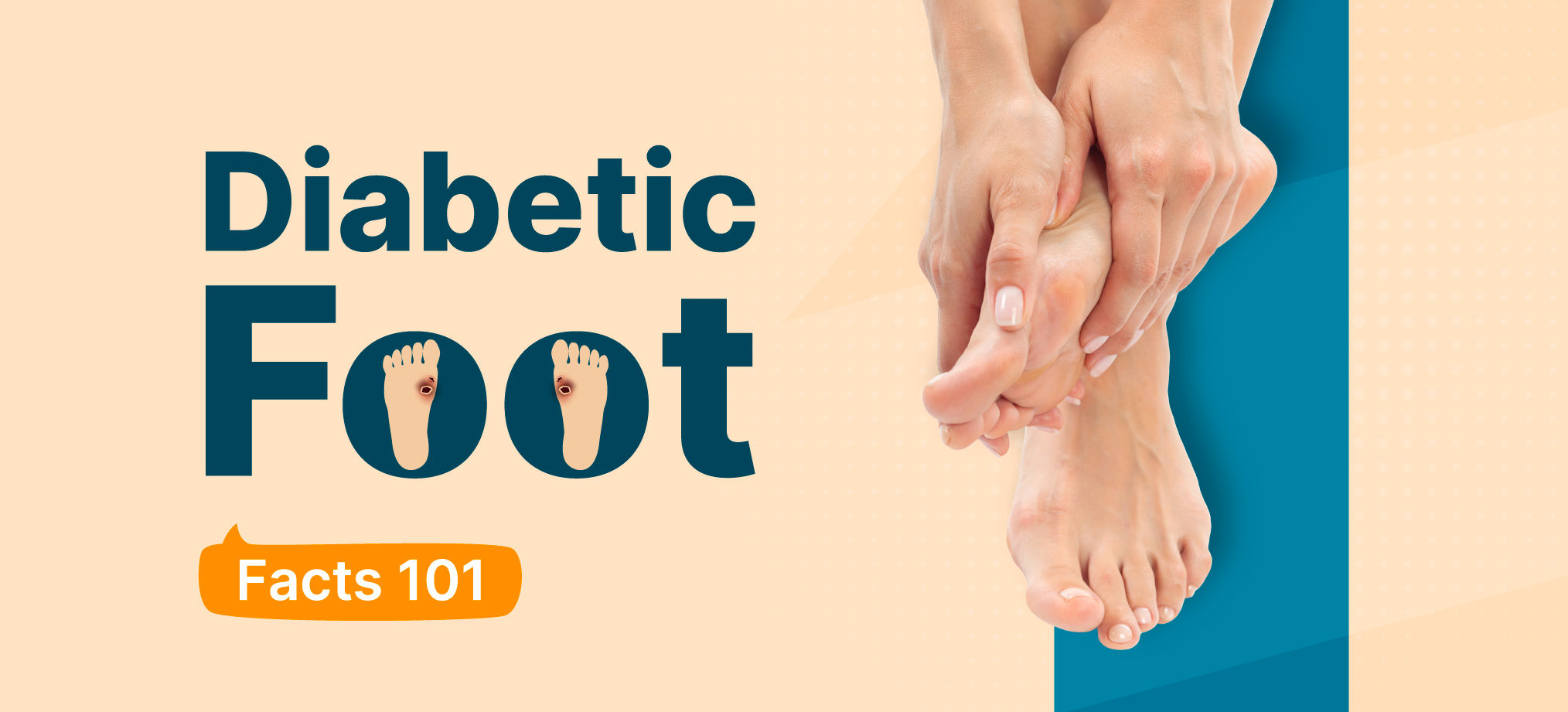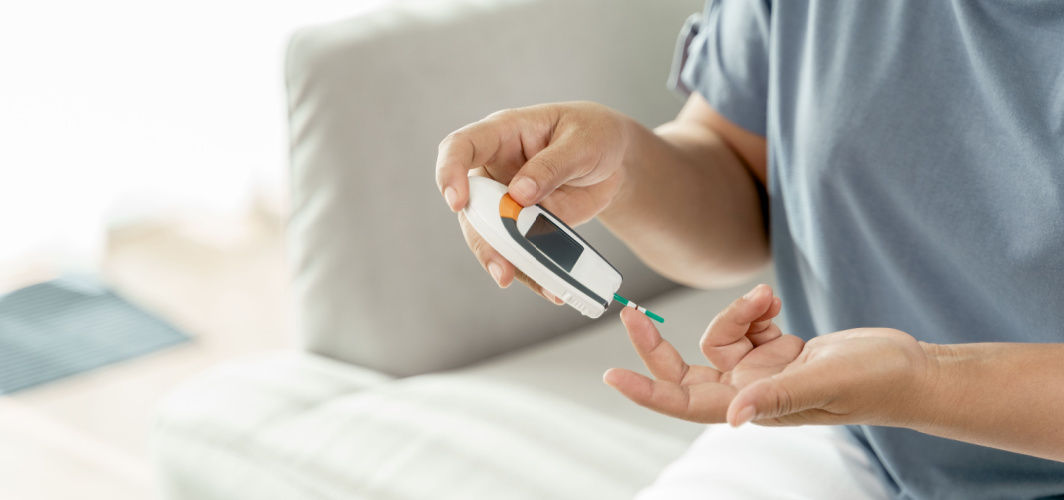Diabetes Management
Keeping an Eye on Diabetic Retinopathy
4 min read
By Apollo 24/7, Published on - 02 December 2020, Updated on - 31 October 2025
Share this article
0
13 likes

Causes and stages of diabetic retinopathy
jasjdk djads kjakds akd
Background retinopathy: In this early stage of diabetic retinopathy, the walls of the blood vessels in the retina weaken. It causes tiny bulges called micro-aneurysms that can leak small amounts of blood into the retina. This condition is common in people with diabetes where their vision is not affected but indicates a high risk of developing vision problems in the future.
Pre-proliferative diabetic retinopathy: This is the second stage that occurs when the damaged blood vessels swell, causing fluid and blood leakage into the retina. Sometimes, the macula, the center of the retina responsible for sharp and straight-ahead vision, can be affected. The swelling and thickening of the macula are known as macular edema. This stage usually causes distorted vision.
Proliferative diabetic retinopathy: This stage occurs when the damaged blood vessels completely block the blood supply. It is characterized by abnormal growth and the development of new blood vessels. These new blood vessels are weak and bleed easily into the vitreous (vitreous is the gel-like fluid that fills the center of the eyes). This condition causes vision loss that may be severe.
Symptoms of diabetic retinopathy
Eye floaters (transparent spots or dark strings that float in the person’s vision)
Blurred or patchy vision
Fluctuating vision
Impaired colour vision
Dark or empty spots in the centre of the vision
Sudden loss of vision
Importance of screening
People with type 2 diabetes have retinopathy in the early stages when they get their diabetes diagnosed. For these people, an annual dilated eye examination is recommended shortly after diabetes is diagnosed.
People with type 1 diabetes are advised for annual eye examinations after 3-5 years of diagnosing diabetes.
Preventive steps
Managing diabetes: One should follow a healthy diet and be physically active. It is recommended that people with diabetes exercise or walk for at least 150 minutes a week. In addition to this, they must take oral diabetes medications or insulin as prescribed by the doctor, and not miss any doses.
Monitoring the blood sugar level: People with diabetes must check and record their blood sugar levels frequently. This will help to take measures to keep sugar levels in a healthy range.
Testing for HbA1c level: HbA1c test reflects the average blood sugar levels for the last 3 months. One should aim to keep the HbA1c under 7 percent.
Keeping blood pressure and cholesterol under control: Healthy diet, regular exercise, and a healthy weight help keep these levels under check. However, sometimes medication may also be required.
Quitting smoking: Smoking may increase the risk of developing various diabetes-related complications. Quitting smoking will help to reduce the risk of diabetic retinopathy.
Being mindful of vision changes: Any changes in vision such as floaters, dark spots, or blurred vision should be immediately discussed with an eye specialist.
Conclusion
JavaScript Alert
Diabetes Management
Leave Comment
Recommended for you

Diabetes Management
Prevention Tips For Diabetes Foot Infection
In case of uncontrolled diabetes, high blood sugar levels can damage the blood vessels and nerves, resulting in poor blood circulation. This can increase the risk of foot ulcers and infections. The reduced blood flow and loss of sensation in the feet can make it difficult to detect injuries or infections, leading to delayed healing and potential complications.

Diabetes Management
How To Know If You Have Insulin Resistance?
Reduced reactivity to insulin is one of the symptoms of insulin resistance, which affects how glucose is metabolised. Recognising its symptoms, understanding its causes, and undergoing appropriate testing are essential for early detection and effective management. With lifestyle modifications, medications, and regular monitoring, individuals can successfully manage insulin resistance and improve their overall health.

Diabetes Management
Can People with Diabetes Consume Low Calorie Sweeteners?
Common low-calorie sweeteners approved by the FDA include aspartame, acesulfame potassium, saccharin, sucralose, stevia, advantame, and neotame. Though artificial sweeteners are considered safe, long-term or excessive use may have side effects such as altered taste buds, increased cravings for sweets, and a potential association with weight gain, metabolic syndrome, and type 2 diabetes. Consulting with a dietician can help in managing blood sugar levels effectively.
Subscribe
Sign up for our free Health Library Daily Newsletter
Get doctor-approved health tips, news, and more.
Visual Stories

8 Fruits That are Incredibly Healthy for Diabetes
Tap to continue exploring
Recommended for you

Diabetes Management
Prevention Tips For Diabetes Foot Infection
In case of uncontrolled diabetes, high blood sugar levels can damage the blood vessels and nerves, resulting in poor blood circulation. This can increase the risk of foot ulcers and infections. The reduced blood flow and loss of sensation in the feet can make it difficult to detect injuries or infections, leading to delayed healing and potential complications.

Diabetes Management
How To Know If You Have Insulin Resistance?
Reduced reactivity to insulin is one of the symptoms of insulin resistance, which affects how glucose is metabolised. Recognising its symptoms, understanding its causes, and undergoing appropriate testing are essential for early detection and effective management. With lifestyle modifications, medications, and regular monitoring, individuals can successfully manage insulin resistance and improve their overall health.

Diabetes Management
Can People with Diabetes Consume Low Calorie Sweeteners?
Common low-calorie sweeteners approved by the FDA include aspartame, acesulfame potassium, saccharin, sucralose, stevia, advantame, and neotame. Though artificial sweeteners are considered safe, long-term or excessive use may have side effects such as altered taste buds, increased cravings for sweets, and a potential association with weight gain, metabolic syndrome, and type 2 diabetes. Consulting with a dietician can help in managing blood sugar levels effectively.